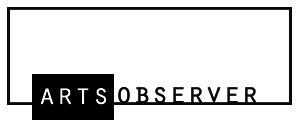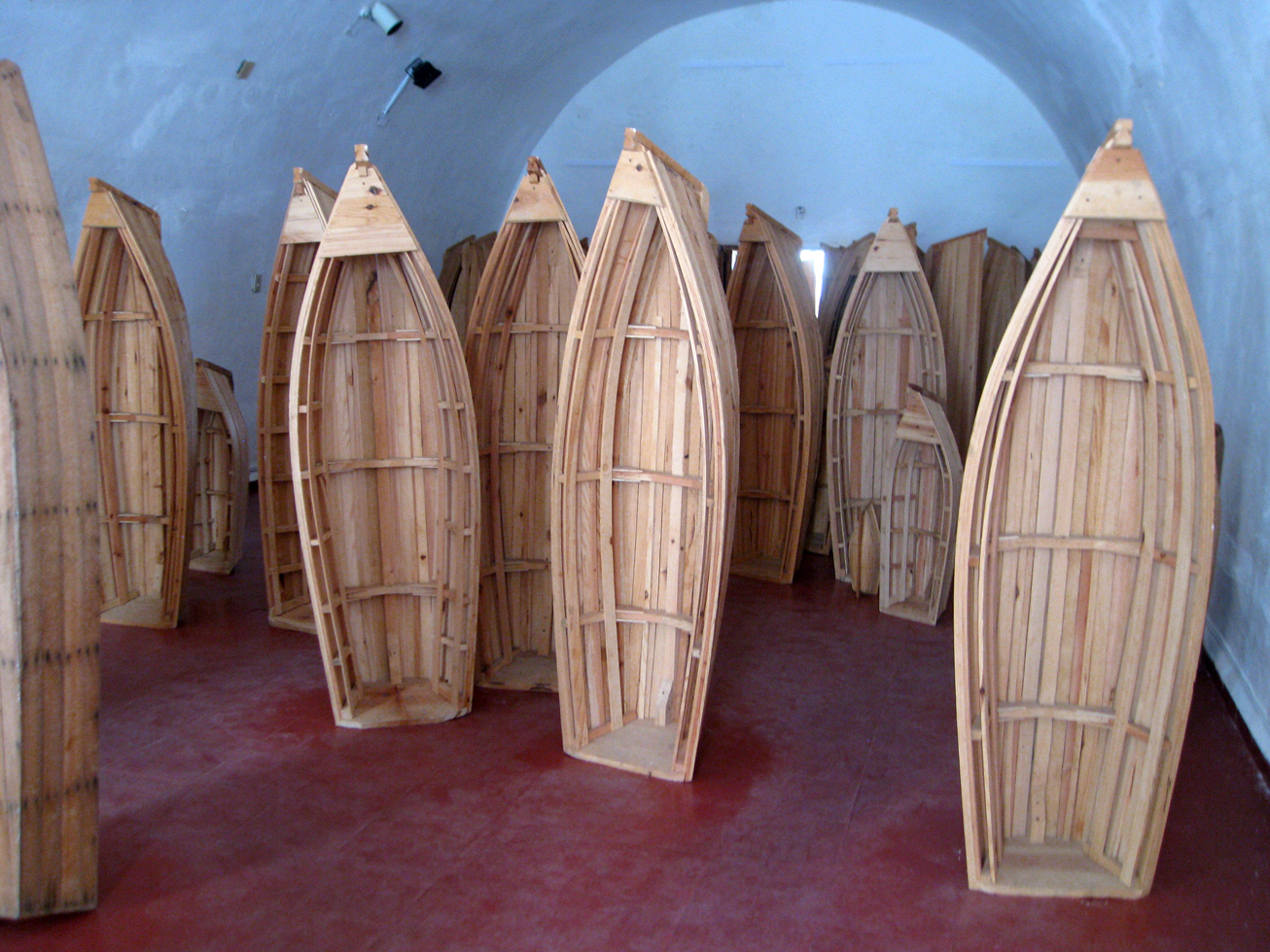HAVANA—Spread throughout the city, public installations and exhibits at various Havana Biennial venues had a common theme explored symbolically with boats, oars, water and planes. Again and again, emigration and the perils and opportunity of the journey from Cuba to elsewhere—usually Miami—were addressed in innovative ways by Cuban artists.
Made by Kcho Estudio
Alexis Leyva Machade, artist and founder of Kcho Estudio, had a hand in a number of the provocative works that were a part of the biennial and were created in recent years. The studio’s installations at an 18th century fort included a shiver of sharks dressed in human clothing and suspended from the ceiling to appear to be swimming and a room full of wood slat boats of various sizes was interestingly titled “The Conversation” (shown above).
At el Gran Teatro de Habana—a grand, yet neglected marble Italianate building adjacent to the theater where Cuba’s national ballet performs—a large human-shaped barge built by the studio was on display next to three screens showing video of the wooden vessel at sea. In another installation along the expansive Malecon seawall, a pair of enormous, lengthy Kcho-created boat oars casually rested.
Power of Performance
Carlos Martiel Delgado Sainz explored the theme in his 2011 work “A donde mis pies no lleguen,” which means “where my feet do not reach.” The performance involved the Afro-Cuban artist lying with his arms crossed on his chest, as though in a coffin, in a sea blue-colored boat floating in water.
After visiting official and unofficial venues, the creative latitude given to many Cuban artists—their ability to exercise free expression and travel abroad, promote and sell their art—was striking.
According to one source, apparently the only subject matter that is off limits when it comes to artistic expression is the image of Fidel Castro—who locals refer to as “FC.”
From Havana to Miami
A curator who hosts a gallery in her home has a video installation on constant rotation. “44:53” by Ignacio Barrios is shot from the window of a plane flying from Havana to Miami—a trip that takes approximately 44 minutes and 53 seconds. The video is all blue sky and clouds with the sound of the jet engine and the constant babble of children on board in the background.
Museo de Bellas Artes, Cuban Collection in Havana, the official government museum, is hosting a special solo exhibition of work by Sandra Ramos that invokes matters of emigration. Ramos employs passport images in her multimedia work and the show features “90 Miles,” a bridge visitors can walk across while looking down at a series of aerial photographs of the flight from Havana to Miami.
Exporting Cuba’s Culture
Two Cuban curators (one who represents established internationally acclaimed Cuban artists, the other who works with emerging independent artists), a local art critic/museum guide, a Cuban tour guide and a U.S. State Department official at the U.S. Interest Section in Havana, all described the favorable regard the Cuban government gives to Cuban artists as a strategic approach pursued to elevate the island’s cultural standing on the international stage. Exporting Cuban art and promoting its artists helps to showcase the country’s cultural excellence, fine arts training and intellectual creativity to the world, they each explained.
At an independent studio where two photographers and an artist who specializes in pencil drawings show and sell their work, two of the young artists said in the coming months they would be traveling to the United States for stints as visiting professors at American Universities. One said he was returning to New York University’s Tisch School of the Arts where he had previously taught.
By contrast, a Cuban writer wrote last year in the New York Times about her failed experience (and that of others in certain professions) applying for a “white card” the government-issued document necessary to travel abroad.
View more coverage of the 11th Havana Biennial.
All photos by Arts Observer
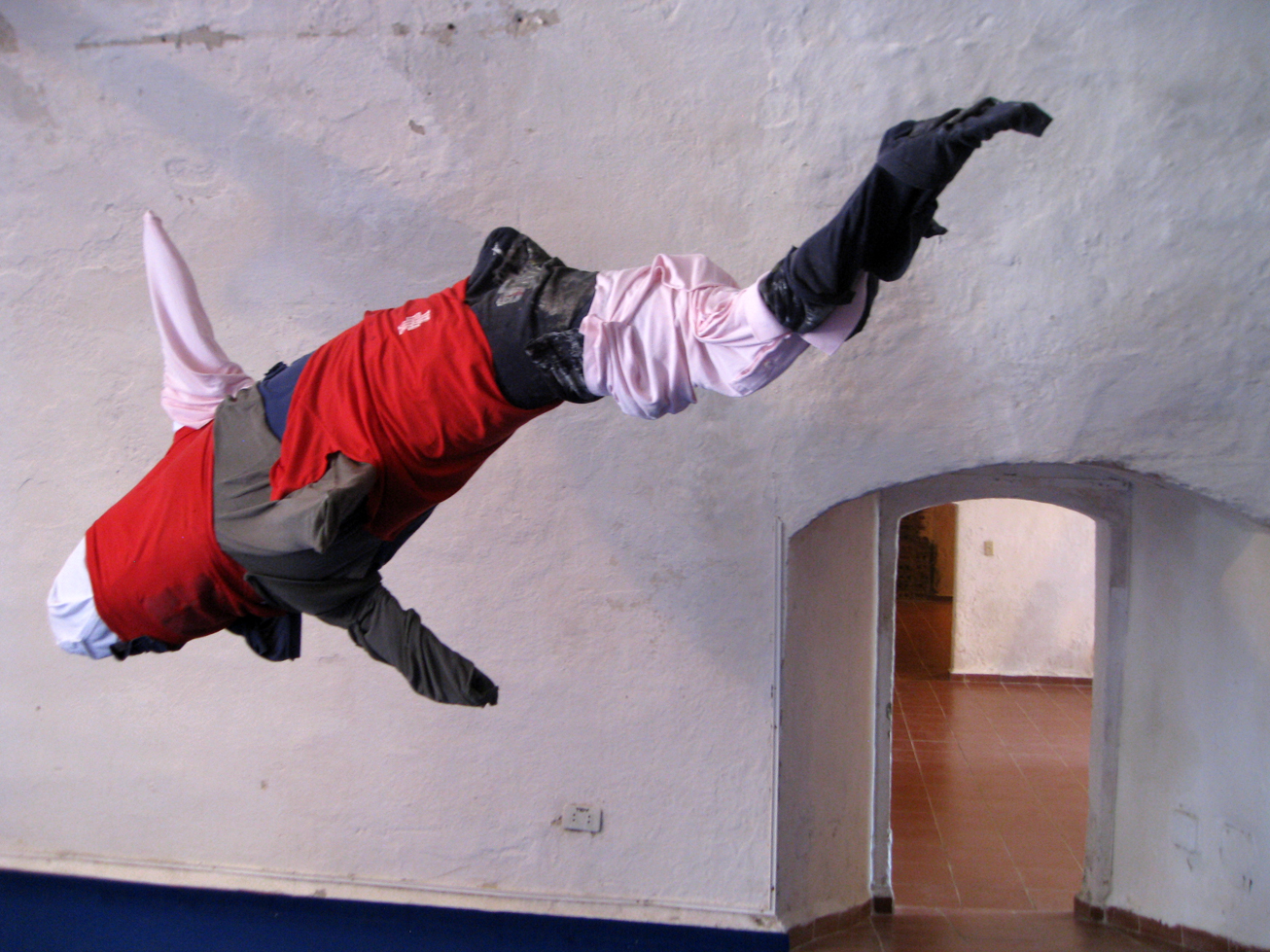
Above, Suspended from the ceiling by invisible wire, a series of killer sharks in human clothing appear to be swimming. “The Worst of Winter,” 2012 (fiberglass, nylon, cloth, and bags) by Kcho Studio, which was founded by Alexis Leyva Machade, who is also known as “Kcho,” at La Cabana fortress. Top of page, “The Conversation,” 2011 (wood, variable dimensions) by Kcho Estudio of Cuba at La Cabana fortress.
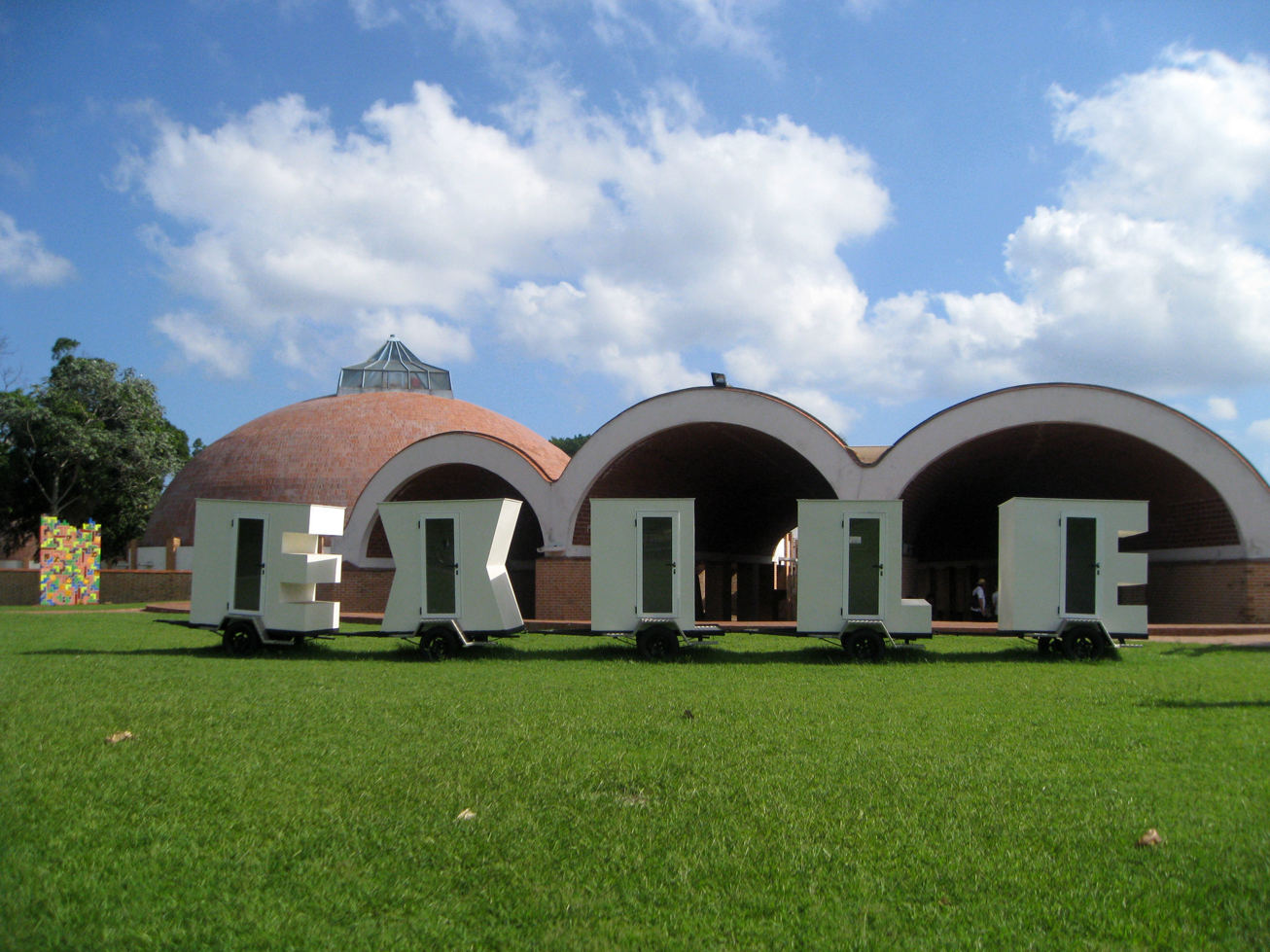
Above and below, “Exile,” 2011-12 (five mini-mobile homes in the form of letters spell out “exile”) by Jose Angel Vincench (Cuba) in front of the visual arts school at Instituto Superior de Arte (ISA), Havana’s fine arts university.
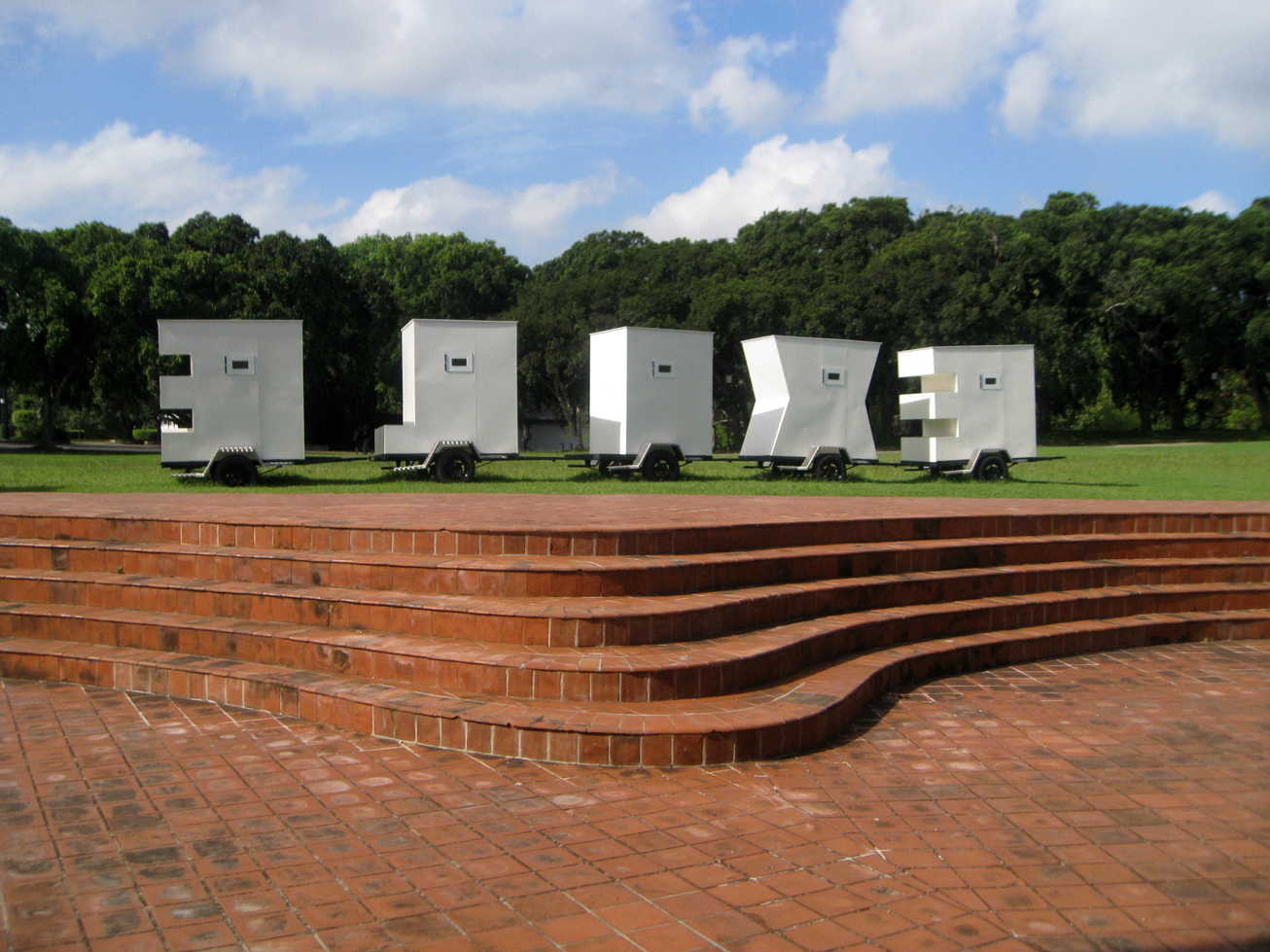
Rear view, “Exile,” 2011-12 (five mini-mobile homes in the form of letters spell out “exile”) by Jose Angel Vincench (Cuba).

Above and below, “El David,” 2009 (wood, metal, rubber tires, rope) with accompanying video of the work at sea by Alexis Leyva Machade (Cuba) who is also known as “Kcho,” on exhibit at el Gran Teatro de Habana in central Havana.

Video of “El David” by Alexis Leyva Machade (Cuba). The wood barge is in the form of a human being.

“People of Giants,” 2012 (wood and metal) by Kcho Estudio of Cuba. The gigantic pair of oars is public installation at the seawall along the Malecon highway in Havana.
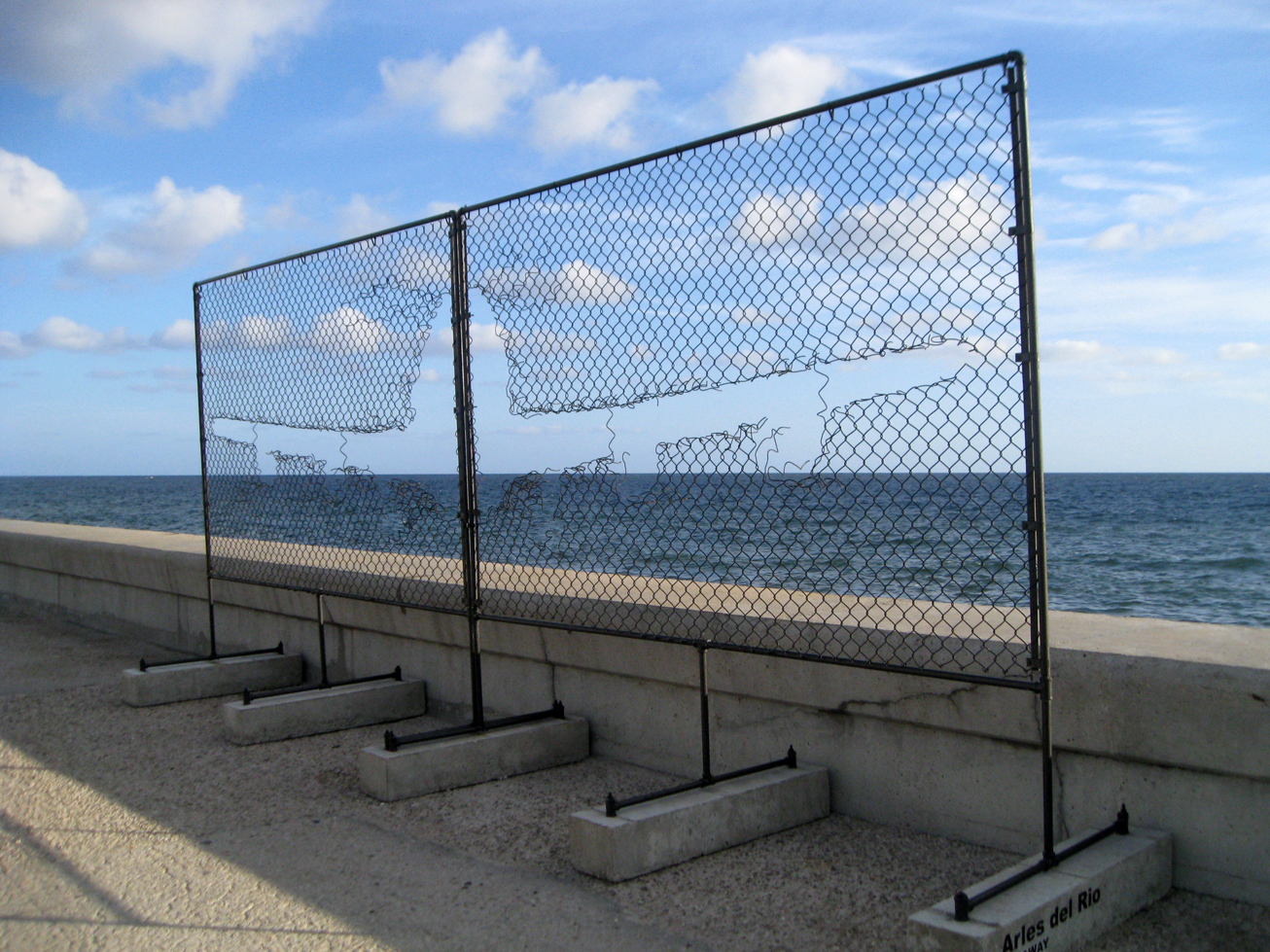
“Fly Away,” 2011 (chain link fence) by Arlés del Río (Cuba). The public installation at the seawall along the Malecon highway in Havana is a silhouette of a soaring jet cut out of a section of chain link fence.
